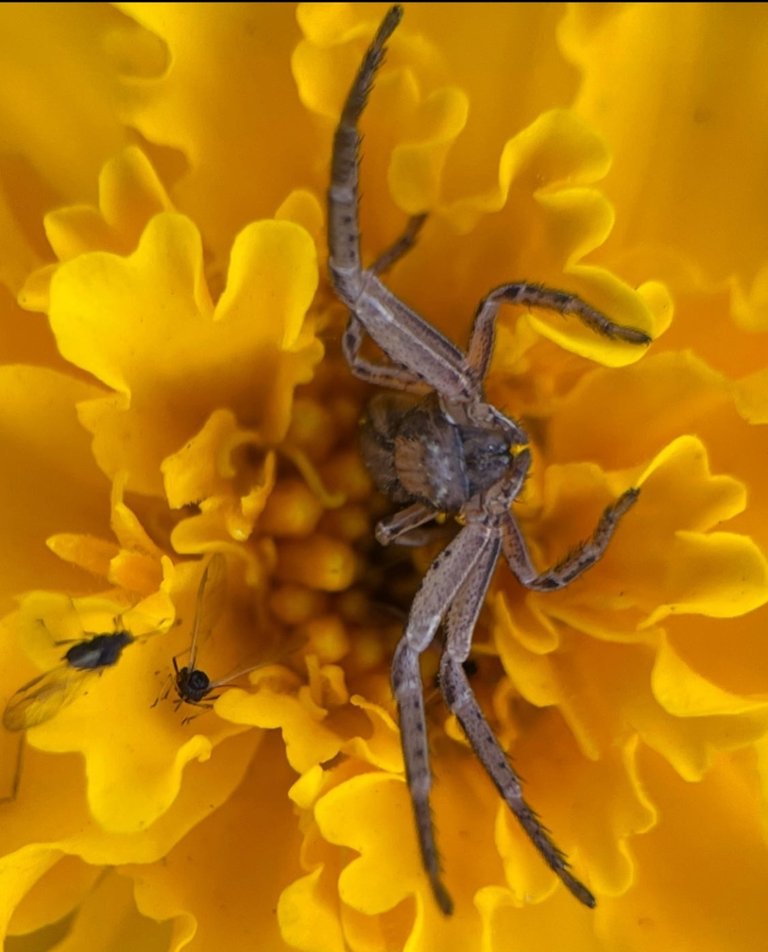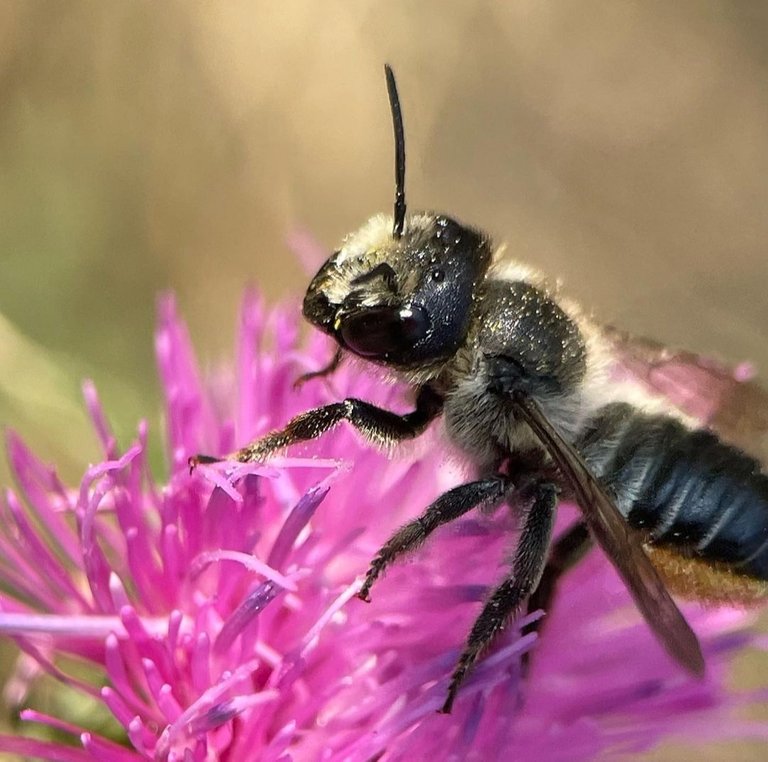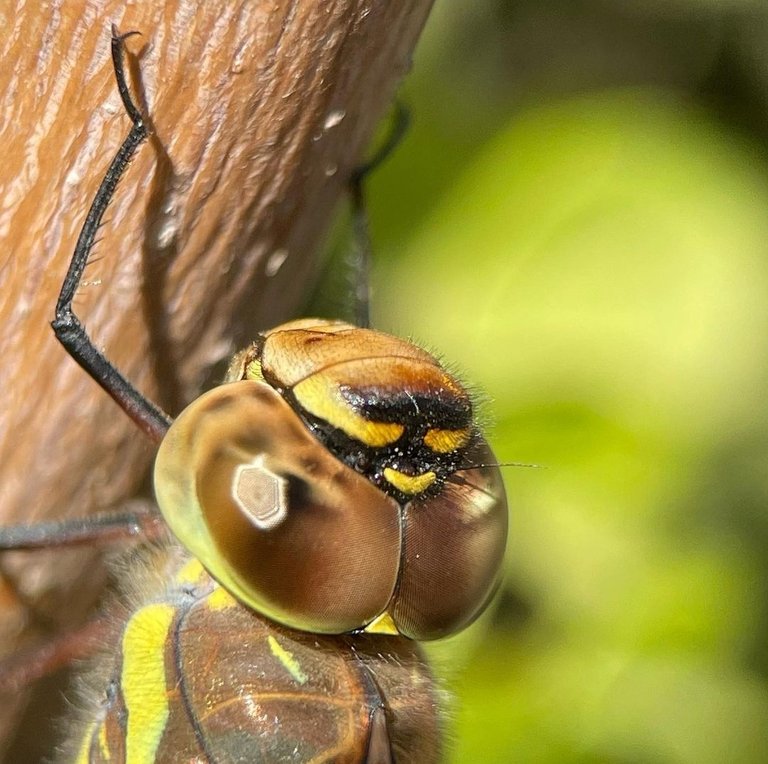
Spiders also want hugs.
In the photo xysticus wrinkled (Spiracme striatipes).
It belongs to the family of spiders (Thomisidae), which has more than 2,000 species.
Spiders of this family move sideways, for which they got their name. Bokohody do not weave cobwebs, and prey is caught with the front legs facing up.
Body length of females 7-9 mm, males 4.6-5.8 mm.
Inhabits low plants and under stones. Loves dry, well-lit places.
Puberty occurs in late summer - early autumn.

This is a bee belonging to the genus Megachile. It is the largest genus of bees in the Megachilidae family, comprising more than 1,300 species.
As mentioned above, it belongs to the family Megachilidae, which has more than 4,000 species.
The body length is slightly less or about the same as that of an ordinary bee, that is, about a centimeter.
They nest in ready-made cavities (in wood, earth). In these cavities, they build a cigar-shaped nest of evenly cut round and oval pieces of leaves. I have often noticed in everyday life circles carved in leaves, most often up to 5 mm in diameter, and for me it has always been a mystery their origin, it turns out these circles are made by bees of this genus. They cut circles with sharp jaws.
Distributed everywhere, there are about 100 species in Europe.
They feed on the nectar of legumes, prefer alfalfa.
The megahill bee can be easily identified by the group of hairs on the lower abdomen.

In the photo a local rocker (Aeshna mixta).
It belongs to the family Aeshnidae, which has about 400 species.
Body length 5.6-6.4 cm.
On the forehead there is a characteristic T-shaped pattern.
The larvae live in stagnant or low-flowing water, preferring small, overgrown with aquatic plants ponds. The body length of these aquatic predators reaches 6 cm in old age. They sit in the water, attached to various objects and plants. In the form of prey, they are capable of sharp jerks, using the principle of jet propulsion. At the moment of movement the larva sharply throws out a stream of water from a back gut thanks to what receives a strong push and the insect jumps in water. The larval stage lasts 2 years.
Summer from late June to mid-October. This species is migratory, preferring stagnant and slow-flowing bodies of water.
Yay! 🤗
Your content has been boosted with Ecency Points
Use Ecency daily to boost your growth on platform!
Support Ecency
Vote for new Proposal
Delegate HP and earn more, by @rangerover1.
Congratulations @rangerover1! You have completed the following achievement on the Hive blockchain and have been rewarded with new badge(s):
Your next target is to reach 100 replies.
You can view your badges on your board and compare yourself to others in the Ranking
If you no longer want to receive notifications, reply to this comment with the word
STOPSupport the HiveBuzz project. Vote for our proposal!